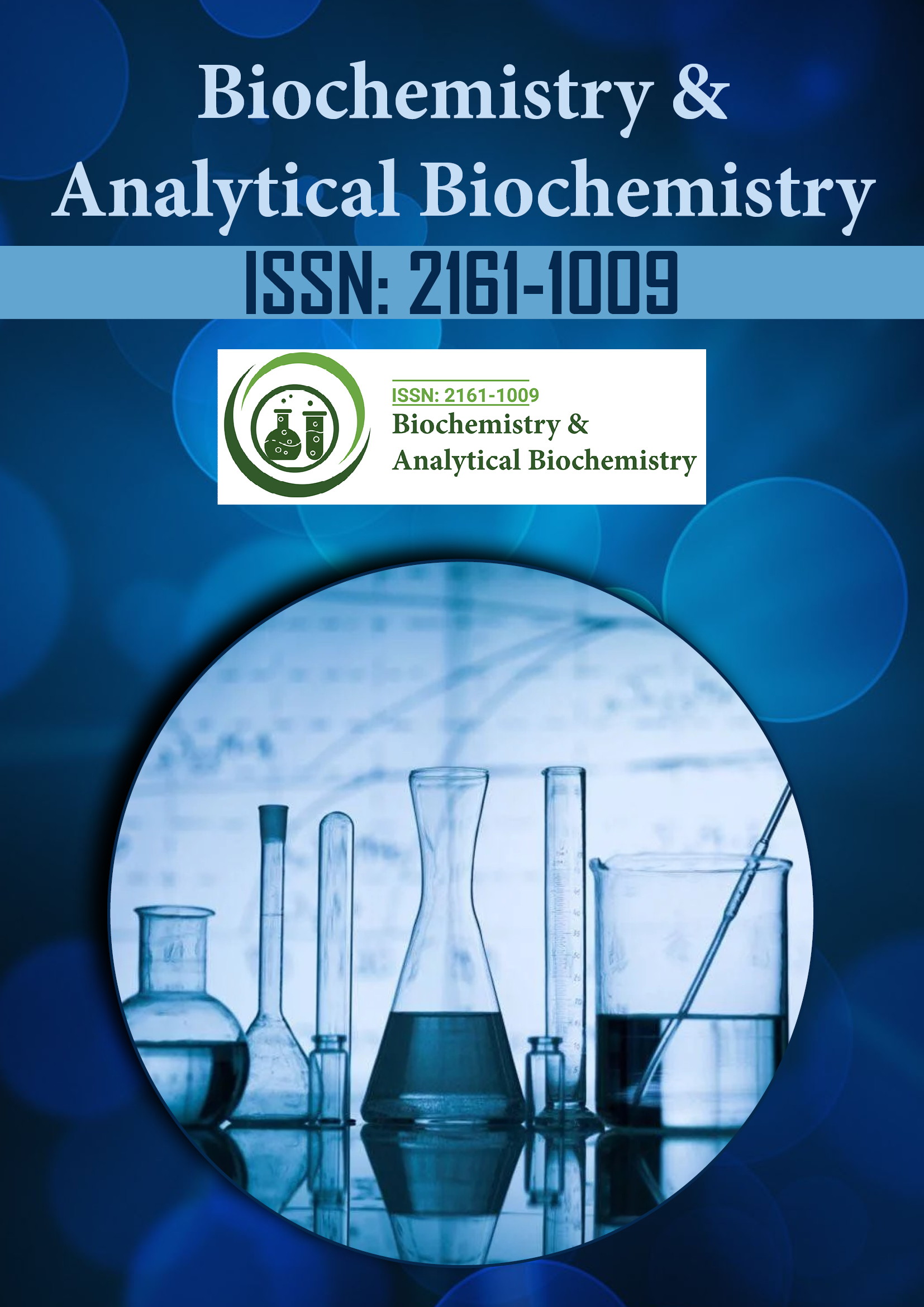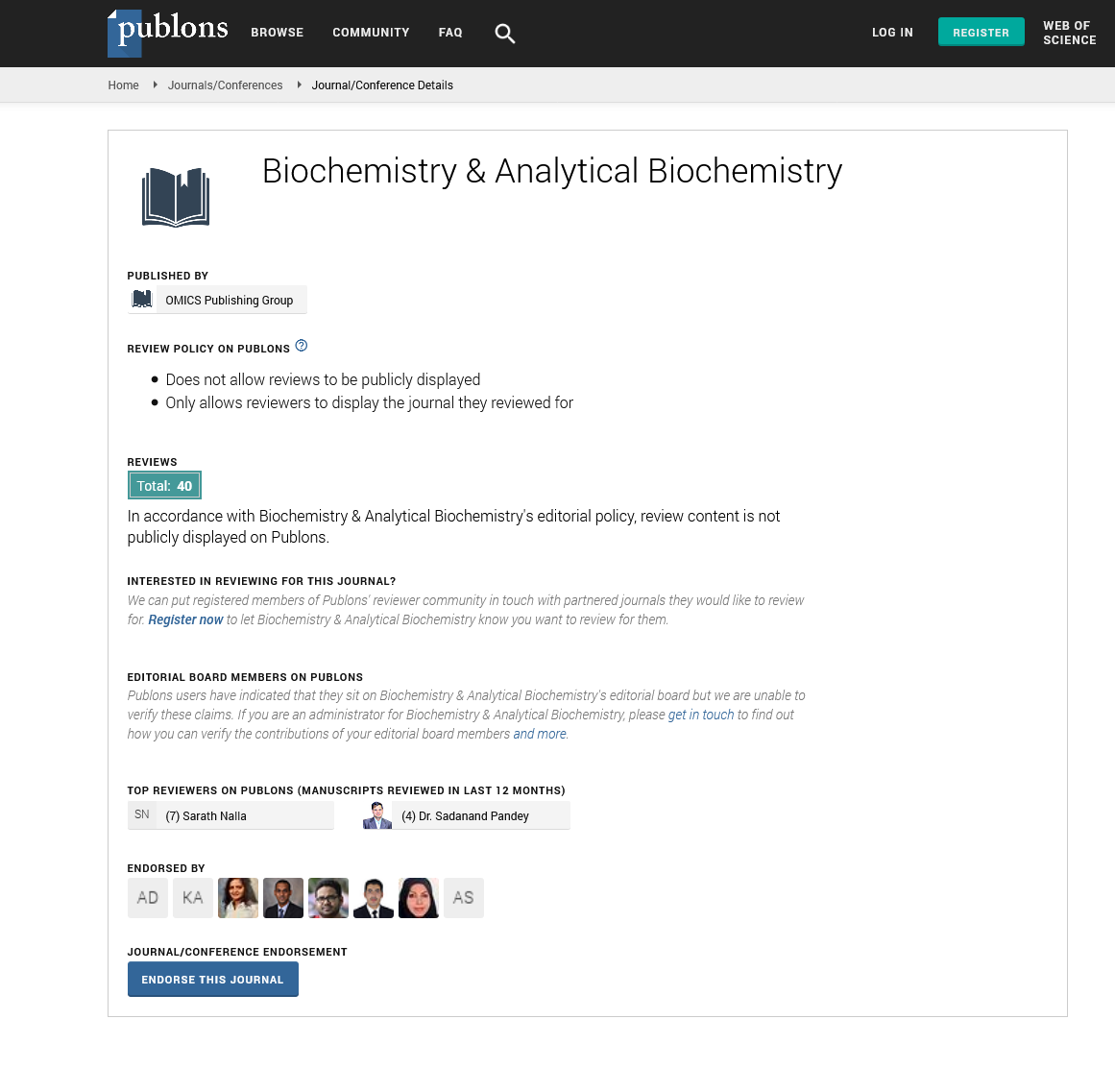Indexed In
- Open J Gate
- Genamics JournalSeek
- ResearchBible
- RefSeek
- Directory of Research Journal Indexing (DRJI)
- Hamdard University
- EBSCO A-Z
- OCLC- WorldCat
- Scholarsteer
- Publons
- MIAR
- Euro Pub
- Google Scholar
Useful Links
Share This Page
Journal Flyer

Open Access Journals
- Agri and Aquaculture
- Biochemistry
- Bioinformatics & Systems Biology
- Business & Management
- Chemistry
- Clinical Sciences
- Engineering
- Food & Nutrition
- General Science
- Genetics & Molecular Biology
- Immunology & Microbiology
- Medical Sciences
- Neuroscience & Psychology
- Nursing & Health Care
- Pharmaceutical Sciences
Commentary - (2024) Volume 13, Issue 1
Microbiota Transplantation: A Comprehensive Approach for COPD
Wei Chan*Received: 02-Mar-2024, Manuscript No. BABCR-24-25063; Editor assigned: 05-Mar-2024, Pre QC No. BABCR-24-25063 (PQ); Reviewed: 21-Mar-2024, QC No. BABCR-24-25063; Revised: 27-Mar-2024, Manuscript No. BABCR-24-25063 (R); Published: 05-Apr-2024, DOI: 10.35248/2161-1009.24.13.528
Description
Microbiome transplantation has emerged as a potential strategy in addressing Chronic Obstructive Pulmonary Disease (COPD), signifying a paradigm shift in treatment approaches. The respiratory microbiome plays a pivotal role in COPD pathogenesis, influencing disease severity and exacerbations. Transplanting beneficial microbial communities into the respiratory system aims to restore microbial balance, alleviate inflammation, and enhance host defense mechanisms. This innovative therapeutic avenue holds potential in modulating the dysbiotic microbiota associated with COPD, presenting an exciting frontier in precision medicine. As study progresses, microbiome transplantation stands as a transformative intervention with the potential to revolutionize COPD management and improve patient outcomes.
The term "human microbiome" refers to all living microorganisms, including their genomes and the metabolites they produce, that use the human body as their home. It mostly settles on mucosal surfaces in the respiratory system, including the lungs, bronchial tree, and oropharynx. Its constituents can alter immunological and inflammatory responses, making them act as mutualists, commensals, or pathogens. Most of the research has focused on the microbiome's bacterial component. The bacterial community that makes up the respiratory microbiome, its connections to the disease patterns of chronic obstructive pulmonary disease (COPD), and the possibility of altering the bacterial flora to produce advantageous secondary effects on the respiratory system will all be the focus of this study.
The human microbiome has been the subject of extensive investigation in recent decades, mainly due to its potential as a source of novel medical treatments. The microbiota that has colonized the various body surfaces aids in many physiological and metabolic processes in the human host, and there is growing evidence linking clinical disorders to modifications in the makeup and function of the microbiota. This has provided support for the beneficial management of the microbiota. The transplantation of microbiota or microbiota-derived components from healthy donors is a tactic in patients with illnesses.
Faecal microbiome transplantation has shown great promise in treating clostridium difficile infections; consequently, it has also been used to treat other diseases, such as skin pathologies and vaginal disorders, where skin microbiota is transplanted. Even Nevertheless, altering the microbiota could become a cuttingedge strategy for boosting the potency of cancer therapies. This study discusses the principles, advantages, and disadvantages of microbiome transplantation in addition to the various therapeutic contexts in which it has been applied. Dysbiosis is the term for a shift in the community structure of the host microbiota that is connected to illness. It might lead to the loss of beneficial commensals and an increase in potentially harmful bacteria.
Study on the microbiome has concentrated on human pathological disorders such obesity, diabetes, Parkinson's disease, and arthritis, which were previously believed to have an unknown aetiology. One of the primary objectives of these studies has been to identify possible relationships between the composition, abundance, and activity of bacteria and the development or progression of disease, either as protective or causal agents. But what constitutes a healthy microbiome is still up for debate, and it turns out that it is harder to tell commensals from pathobionts and opportunistic pathogens than was once thought. Overconsumption of these microbiotarelated compounds might cause direct or indirect harm to the host by interfering with other processes. For example, the microbiota's production of trimethylamine from dietary quaternary amines has been associated with a higher risk of cardiovascular diseases.
The benefits of microbiota transplantation are now undeniable in many clinical disorders. neverthless, administering live microbes from healthy donors to patients carries certain hazards. Enforcing regulatory requirements on pathogen screening is necessary to lessen the risk of spreading pathogens that have the potential to cause disease, especially those that are resistant to antibiotics. Standardization of procedures, techniques, and methodologies for microbiome preparation, storage, and collecting across many institutions would be important for estimating the efficacy of microbiome transplantation in diverse clinical investigations.
Citation: Chan W (2024) Microbiota Transplantation: A Comprehensive Approach for COPD. Biochem Anal Biochem. 13:528.
Copyright: © 2024 Chan W. This is an open-access article distributed under the terms of the Creative Commons Attribution License, which permits unrestricted use, distribution, and reproduction in any medium, provided the original author and source are credited.

